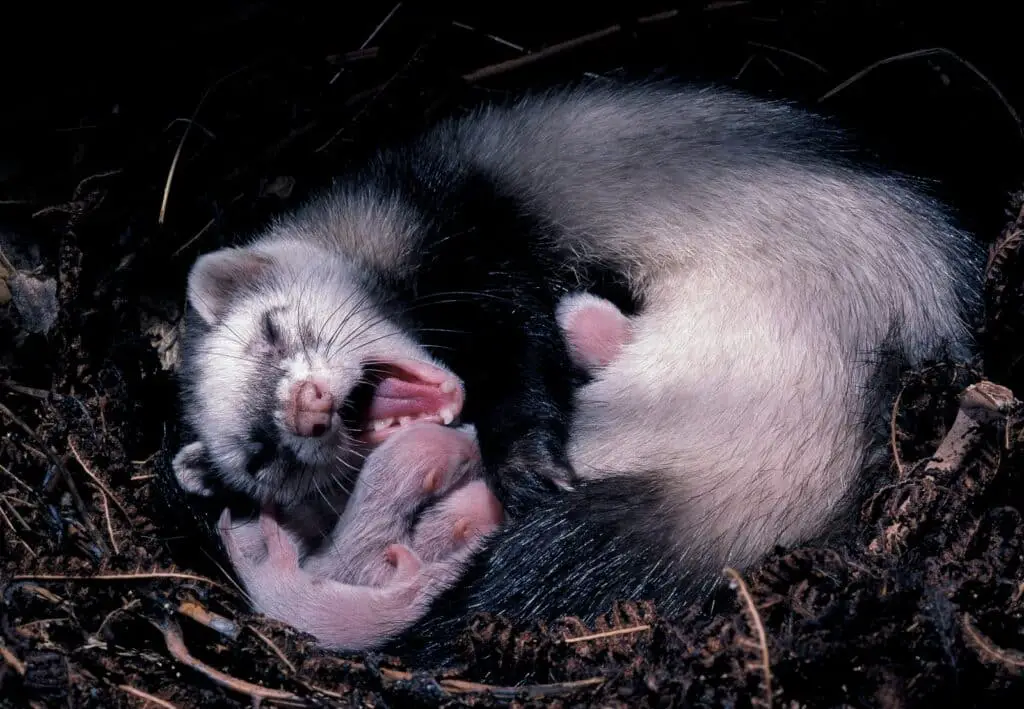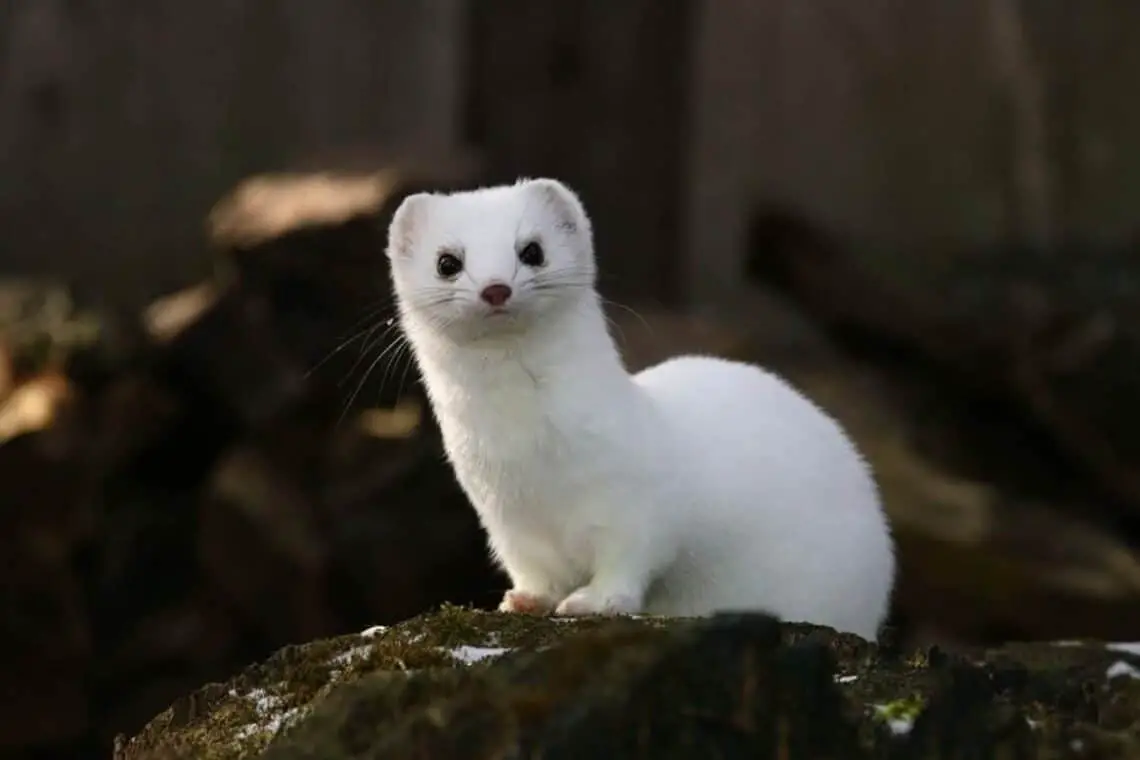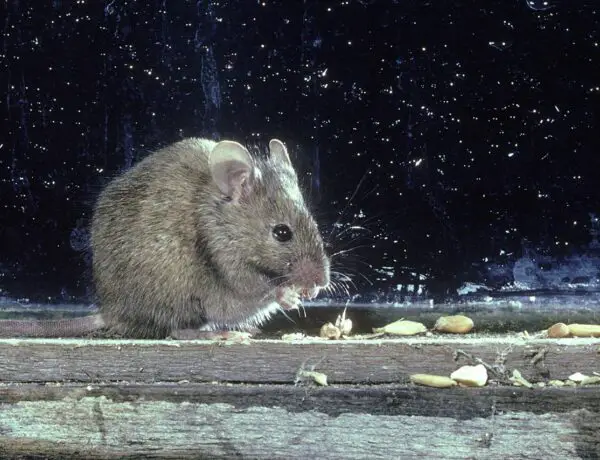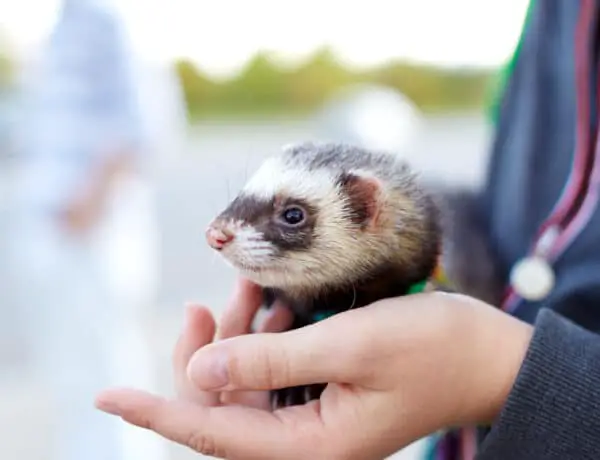Introduction
Can Ferrets See In The Dark: The mysterious and playful nature of ferrets has captivated humans for centuries. These small carnivorous mammals have a range of fascinating traits, one of which is their keen sense of sight. As creatures known for their inquisitiveness and ability to squeeze into the tightest of spaces, ferrets often find themselves exploring dimly lit environments, making their night vision a subject of curiosity. So, let’s embark on a journey into the world of ferrets bones and shed light on their abilities to see in the dark. Ferrets, domesticated descendants of the European polecat, are known for their remarkable sensory perception, which extends beyond their acute sense of smell and sharp hearing. While they may not possess the night vision capabilities of some nocturnal animals like owls or cats, ferrets have unique adaptations that allow them to see relatively well in low-light conditions, making them excellent hunters and explorers during the twilight hours.
The key to understanding ferrets’ vision lies in their eye structure. Like many predatory animals, ferrets have vertically-slit pupils, which can adjust to different lighting conditions by constricting or dilating. This adaptation enables them to regulate the amount of light entering their eyes, optimizing their vision in varying levels of darkness. In addition to their pupils, ferrets have a high number of rod cells in their retinas. Rod cells are specialized photoreceptors responsible for detecting light levels and motion. This abundance of rod cells enhances their ability to see in dim light, making them well-suited for activities such as hunting rodents and exploring burrows in the wild or navigating dimly lit corners of the home.
However, it’s important to note that while ferrets can see in low-light conditions, they are not truly nocturnal animals. Their vision is adapted for crepuscular activity, which means they are most active during the dawn and dusk hours when natural light levels are at their lowest. This behavior aligns with their hunting habits in the wild, as many of their prey animals, such as mice and rabbits, are also crepuscular creatures. In this article, we will explore the nuances of ferret vision, including their adaptation to low-light environments and how these abilities impact their behavior and interactions with their human companions. So, if you’ve ever wondered how ferrets manage to navigate the dark corners of your home or their natural environment, read on to discover the secrets behind their unique visual abilities.

Are ferrets okay in the dark?
In the wild, ferrets would dig burrows to sleep in, and so, even when kept as pets, they prefer total darkness to sleep. Over-exposure to artificial light and not being provided with a dark environment to sleep in can cause your ferret to develop adrenal disease.
Ferrets possess a fascinating array of adaptations that allow them to function effectively in dimly lit environments. These adaptations are critical for their natural behaviors, such as hunting and exploration. Understanding these characteristics can help us appreciate how ferrets perceive the world at night.
Ferrets have vertically-slit pupils, similar to those of cats. These pupils can adjust their size to regulate the amount of light entering the eyes. This adaptation is advantageous for controlling light intake and optimizing vision in different lighting conditions.
Rod cells in the retina are specialized photoreceptors responsible for detecting light levels and motion. Ferrets have a high density of rod cells, which enhances their ability to see in low-light conditions. This abundance of rod cells allows them to detect movement and shapes even when there is limited illumination.
Ferrets’ night vision is closely tied to their crepuscular behavior. They are most active during dawn and dusk when natural light levels are lower. This behavior aligns with their hunting instincts, as many of their prey animals are also crepuscular creatures.
Are ferrets scared of dark?
As I have already mentioned, ferrets love to sleep in the dark and a closed hammock allows them just that. They can tuck in, be comfortable and be in the dark. If you have opened hammocks, don’t worry. You can easily cover the entire cage with fabric so the cage will stay in the dark even during the daytime.
Crepuscular Nature: Ferrets are crepuscular animals, which means they are most active during the dawn and dusk hours. This natural behavior aligns with their hunting instincts, as many of their prey animals are also active during these twilight periods. Therefore, ferrets are accustomed to low-light conditions and do not inherently fear them.
Individual Variation: Just like humans, ferrets have unique personalities. Some ferrets may be more confident and less affected by darkness, while others might be slightly more cautious. It’s essential to consider your ferret’s individual temperament when assessing its comfort level in the dark.
Environmental Factors: A ferret’s response to darkness can also be influenced by its environment and past experiences. For example, a ferret raised in a well-lit, safe, and secure environment from a young age is less likely to be fearful of the dark than one with negative past experiences related to low-light conditions.
What is a ferrets vision like?
Ferrets don’t see much detail beyond a few feet, although at close range – say one or two ferret lengths – they actually see better detail than humans and cats. Ferrets have a blind spot right in front of their nose, which is why they sniff when looking at something close-up.
Vertical-Slit Pupils: One of the most distinctive features of a ferret’s vision is their vertically-slit pupils, similar to those of cats. These pupils can constrict or dilate, allowing ferrets to control the amount of light entering their eyes. This adaptation is advantageous for regulating their vision in varying lighting conditions, from bright daylight to dimly lit environments.
Ferrets have an abundance of rod cells in their retinas. Rod cells are photoreceptors specialized in detecting light levels and motion. This high density of rod cells enhances a ferret’s ability to see in low-light conditions, making them well-suited for activities like hunting and exploring during dawn and dusk.
Ferrets’ vision is closely linked to their crepuscular behavior. They are most active during the twilight hours when natural light levels are at their lowest. This behavior aligns with their natural instincts, as many of their prey animals are also crepuscular creatures.
While ferrets have excellent night vision, their color vision is not as developed as that of humans or some other animals. Ferrets are considered dichromatic, which means they perceive a limited range of colors. They primarily see the world in shades of green and blue, with reds appearing as various shades of gray. This color vision limitation is due to the types of photoreceptor cells in their retinas.
Can ferrets cry?
It is not so much what the ferret does as it is a change in behavior. In other words, while ferrets stoically won’t show pain or distress by crying, they often signal pain with behavioral changes.
Ferrets are known to be social animals with distinct personalities, and they can display a wide range of emotions through their behavior and body language. While they don’t cry tears of sadness or joy like humans, they do express their feelings in various ways.
Playfulness: When a ferret is excited and happy, they may engage in playful behaviors like bouncing, hopping, and chasing. Their dooking vocalizations often accompany these joyful moments.
Affection: Ferrets are known to be affectionate toward their human companions and fellow ferrets. They may cuddle, groom, and “war dance” to express their affection and bonding.
Fear or Anxiety: Signs of fear or anxiety in ferrets can include hissing, puffing up their fur, or retreating to a hiding spot. They may also vocalize with whining or crying when they feel threatened or uncomfortable.
Pain or Discomfort: When in pain or discomfort, ferrets may vocalize with whining or crying. It’s crucial for ferret owners to be attentive to these signs and seek veterinary care when needed.
Can ferrets get angry?
An unusual loud chirp may occur as a defensive vocalization when a ferret is frightened or very excited. Some ferrets bark when they are angry. It is usually easy to discern a happy, curious ferret vocalization from one indicating anger, fear, or extreme pain.
Playfulness: Ferrets are naturally playful creatures. When they’re excited and happy, they often exhibit behaviors like bouncing, hopping, and play wrestling. Their playful antics are a sign of joy and enthusiasm.
Curiosity: Ferrets are incredibly curious animals, and their insatiable desire to explore their surroundings is driven by their curiosity. They’ll often investigate new objects and places with great enthusiasm.
Affection: Ferrets can form strong bonds with their human caregivers and fellow ferrets. They show affection through actions like cuddling, grooming, and “war dancing.” This affectionate behavior is a positive expression of their emotions.
Frustration: Like any curious creature, ferrets can become frustrated when they encounter obstacles or are unable to access something they want. This frustration may be expressed through pawing, whining, or scratching.
Can ferrets get jealous?
Ferrets do not usually demonstrate the jealousy that a cat or dog can when a new pet or a new child enters the home, but they will certainly know if they are suddenly getting a lot less attention from their owner, for whatever reason.
Affection: Ferrets are capable of forming deep attachments to their human companions and other ferrets. They express affection through actions like cuddling, grooming, and “war dancing.”
Territoriality: Ferrets can be territorial animals, and they may become protective of their belongings or spaces within the home. This territorial instinct can sometimes lead to behaviors that resemble jealousy.
Playfulness: Ferrets are naturally playful, and they often engage in joyful, energetic play with each other and with their human caregivers. Play is a positive and bonding activity for ferrets.
Curiosity: Ferrets are intensely curious creatures, always eager to explore new environments and objects. This curiosity can sometimes lead to behavior that might appear as jealousy when they seek attention or investigate new additions to their environment.
Do ferrets smell bad?
The natural musky odor of ferrets comes from their scent glands (most notably the anal glands) and is used for territorial marking. Most commercially available ferrets in the United States are “de-scented,” which means that they have gone through a surgical procedure to remove their anal glands.
Ferrets are beloved for their playful and curious nature, but they do have a reputation for emitting a distinctive odor that can be off-putting to some people. However, the question of whether ferrets smell bad isn’t as straightforward as it might seem. Let’s explore the factors behind ferret odor and how to manage it effectively.
Ferrets have a natural musky scent that is produced by their skin glands. This musky odor serves several purposes in the wild, including marking territory and communicating with other ferrets. While this odor is an inherent part of a ferret’s biology, it doesn’t necessarily mean that ferrets must have a strong, unpleasant smell.
A ferret’s diet plays a significant role in its odor. Low-quality or improper diets can lead to stronger-smelling feces and urine. Regular cleaning and maintenance of a ferret’s living space, including the litter box and bedding, are essential to control odor. Spaying or neutering ferrets can reduce their hormonal odor and prevent certain behaviors that contribute to odor. Over-bathing a ferret can strip their skin of natural oils, leading to an increase in odor. Ferrets should not be bathed too frequently. Some individual ferrets may have a stronger natural odor due to their genetics.
Do ferrets feel sad?
Ferrets can be very emotional at times. You may be surprised to find your ferret is prone to depression. Like humans, ferrets will grieve the loss of a friend, either human or animal. Sad ferrets may spend time in areas their buddy used to frequent.
Ferrets are highly social and intelligent animals that form strong bonds with their human caregivers and fellow ferrets. While they may not experience emotions in the same way humans do, there is evidence to suggest that ferrets are capable of experiencing a range of emotions, including those that might be considered akin to sadness. Let’s explore the emotional world of ferrets and understand how they express their feelings.
Ferrets are known to exhibit a variety of behaviors and body language that suggest the presence of emotions. Some of these behaviors may be indicative of feelings that could be interpreted as sadness.
A ferret that appears unusually inactive, spends more time sleeping, or lacks enthusiasm for play and exploration may be experiencing a decrease in mood. Ferrets may seek out hiding spots or retreat to secluded areas when they feel stressed, anxious, or unwell. This behavior can be a sign of emotional distress. Just like humans, ferrets can experience a loss of appetite when they are not feeling well or are emotionally upset.

Conclusion
While ferrets may not possess true night vision akin to some nocturnal animals, their unique adaptations enable them to navigate low-light conditions with impressive efficiency. Their vertically-slit pupils and abundant rod cells in their retinas make them well-suited for crepuscular activities, aligning with their natural tendencies as hunters and explorers. Understanding the crepuscular nature of ferrets can help us appreciate their behaviors and needs, especially during the dawn and dusk hours when they are most active. Providing them with appropriate mental and physical stimulation during these times is crucial to their well-being. Whether in the wild or as beloved pets, ferrets dark enhances their adaptability and resourcefulness.
It allows them to thrive in a variety of environments and engage in activities that intrigue and delight their human companions. So, the next time you observe your ferret exploring a dimly lit corner of your home or exhibiting bursts of energy during twilight hours, remember that their unique visual abilities are just one of the many fascinating aspects of these captivating creatures. While we have explored the remarkable adaptations that allow ferrets to see in low-light conditions, it’s important to remember that their vision is just one facet of their intriguing biology and behavior. These curious and playful animals have much more to offer in terms of their interactions with humans, their social nature, and their roles as both domesticated pets and wild hunters.
Ferrets have been companions to humans for thousands of years, and their unique abilities have endeared them to many as beloved pets. Their nocturnal tendencies and keen senses add to their mystique, making them captivating and endearing animal companions. Furthermore, studying ferret vision not only helps us understand their biology but can also have practical applications in fields like neuroscience and ophthalmology. The insights gained from researching these fascinating animals may contribute to our understanding of vision and sensory perception in other species, including humans.





No Comments